Foreign Weapons at the Nazi’s “Atlantic Wall”
World War II was the greatest clash of men and machines in human history. And yet despite the innovative engineering and all the human heroism on the battlefield, the engine of victory came down to industrial output, economics and logistics. In that light, it is somewhat amazing that the German military lasted as long as it did.
By 1944, Germany was critically short on manpower as well as the industrial capacity to supply their armies in the field. The Russian front consumed an outrageous amount of the Reich’s resources (estimates range up to almost 70% of all German casualties happening on the Eastern Front). Equipping the Atlantic Wall presented a huge challenge — and the Germans chose to spend their resources in the East, while economizing their defenses on the Western European coastlines.
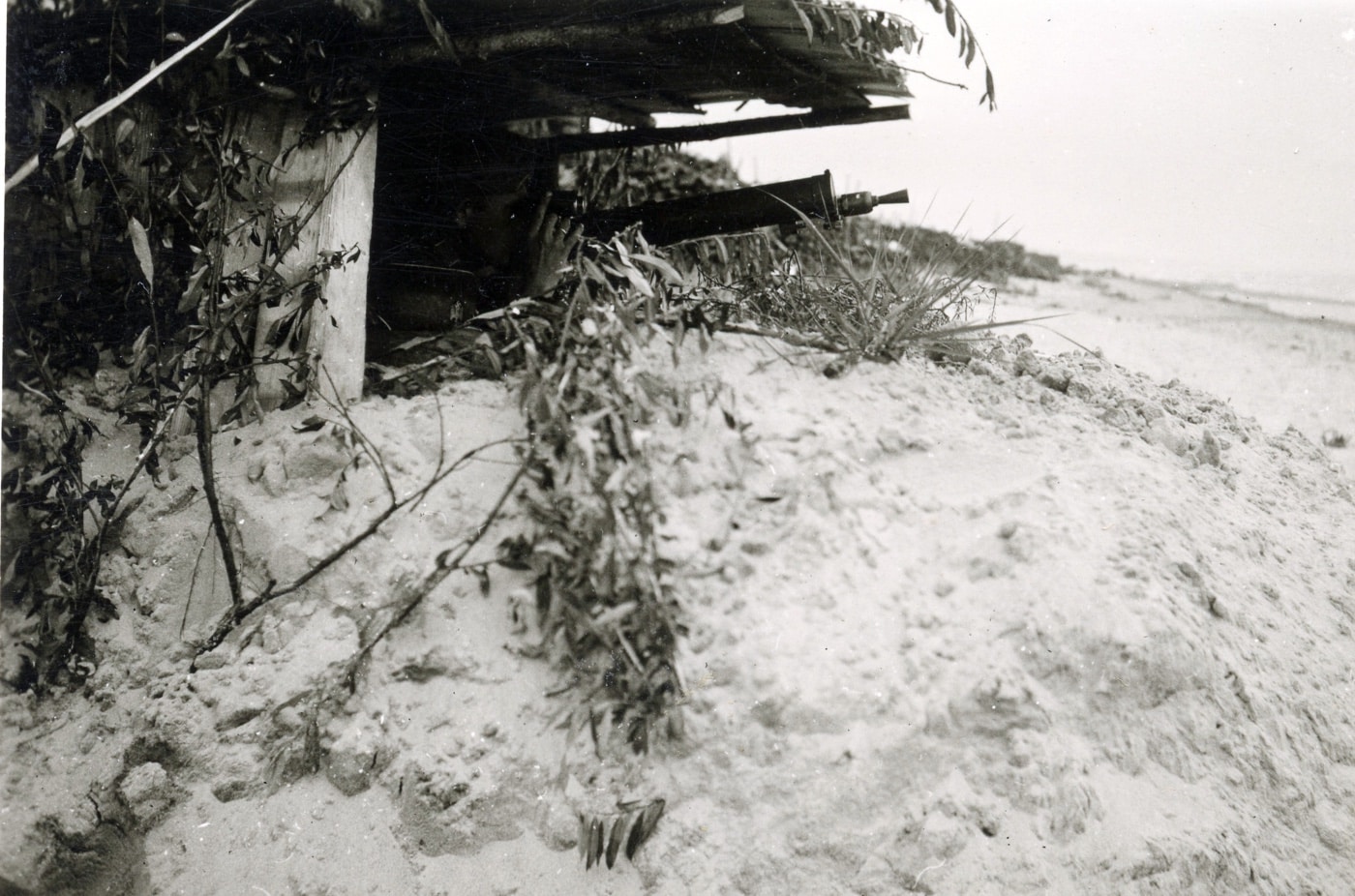
To make it work, the planners in Berlin needed to find the men to serve their cause, and weapons for them to use. The question of manpower was an exercise in careful allocation. The question of firepower was answered by Germany’s plentiful stocks of captured firearms from across Europe.
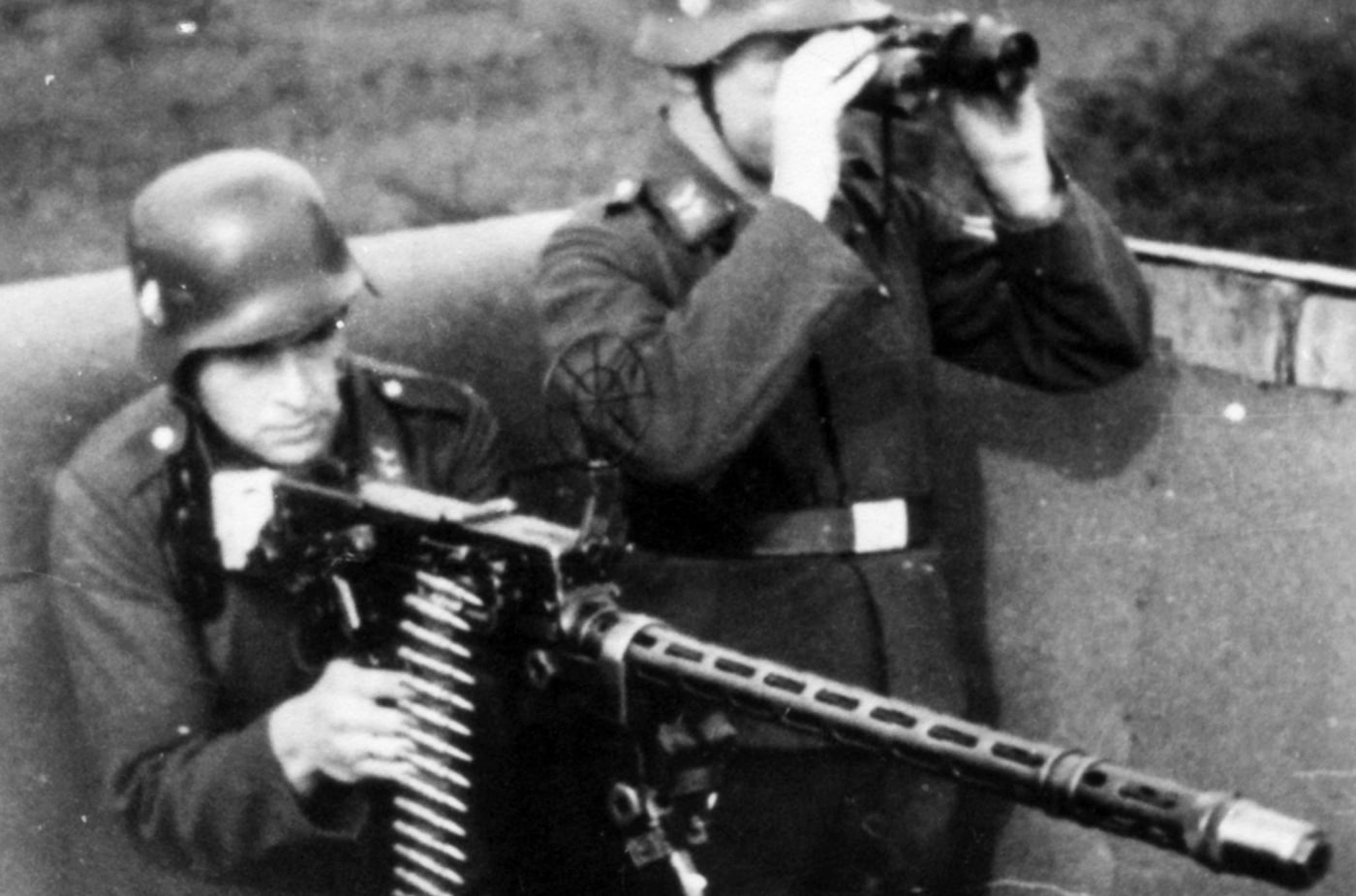
One strategy for acquiring manpower for coastal defense brought captured Red Army conscripts from East to West. About 6% of the troops defending Normandy in 1944 were from the Caucuses and Central Asia and were Germany’s “Eastern Battalions.” G.I.s were surprised to find German troops with Asian faces soon after the D-Day landings, and it was soon learned that the “Osttruppen” soldiers were former conscripts of the Soviet army that volunteered to fight alongside the Germans, or were otherwise coerced to serve the Germans to avoid the horrors of Nazi POW camps.
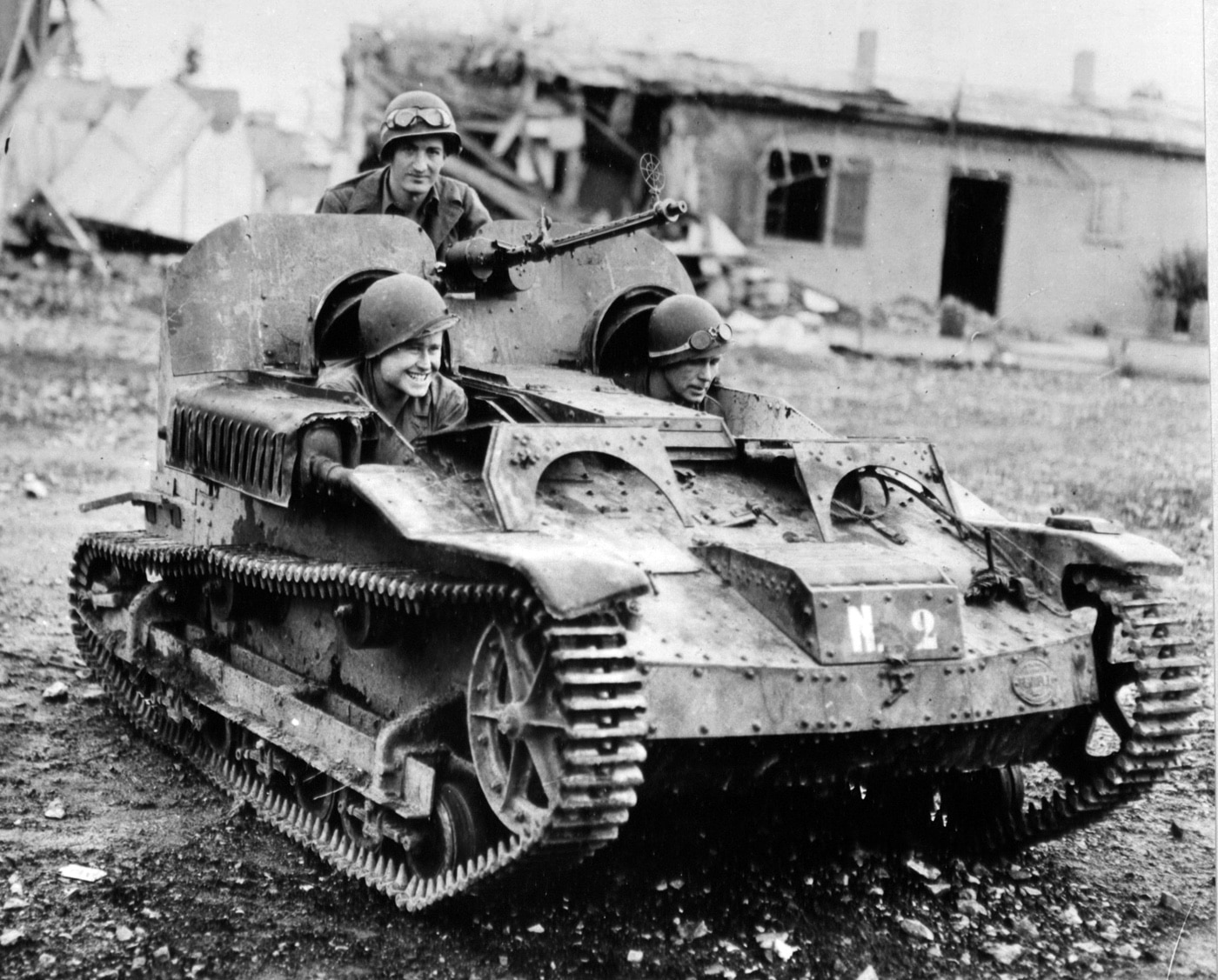
In Germany’s bid to free up as much manpower as possible, these eastern troops were brought to the Atlantic coast to provide manual labor in building fortifications, and if needed, coastal defense duty. As it turns out, they had little motivation to fight against American or British troops — their hatred was reserved for Stalin and the Soviet commissars that had conscripted them years before. Consequently, their situation in Normandy was particularly confused, and their combat performance in Normandy was not impressive. Even so, the Osttruppen brought several interesting small arms with them to France — giving U.S. Ordnance men the chance to review certain firearms they never expected to encounter.
As Allied troops broke through the Channel fortifications and gained a foothold in Normandy, Ordnance men were surprised to find a wide range of small arms they never expected to face. German weapons ranged from the textbook Mauser rifles and MG34 machine guns to a plethora of rifles and machine guns using a bewildering array of ammunition. The complexities of supplying foreign weapons put the Wehrmacht in a difficult position from a logistical perspective. But as a wise old gunsmith once told me: “A rifle made in 1900 will shoot you just as dead as one made in 1944 — the key is the person pulling the trigger.”
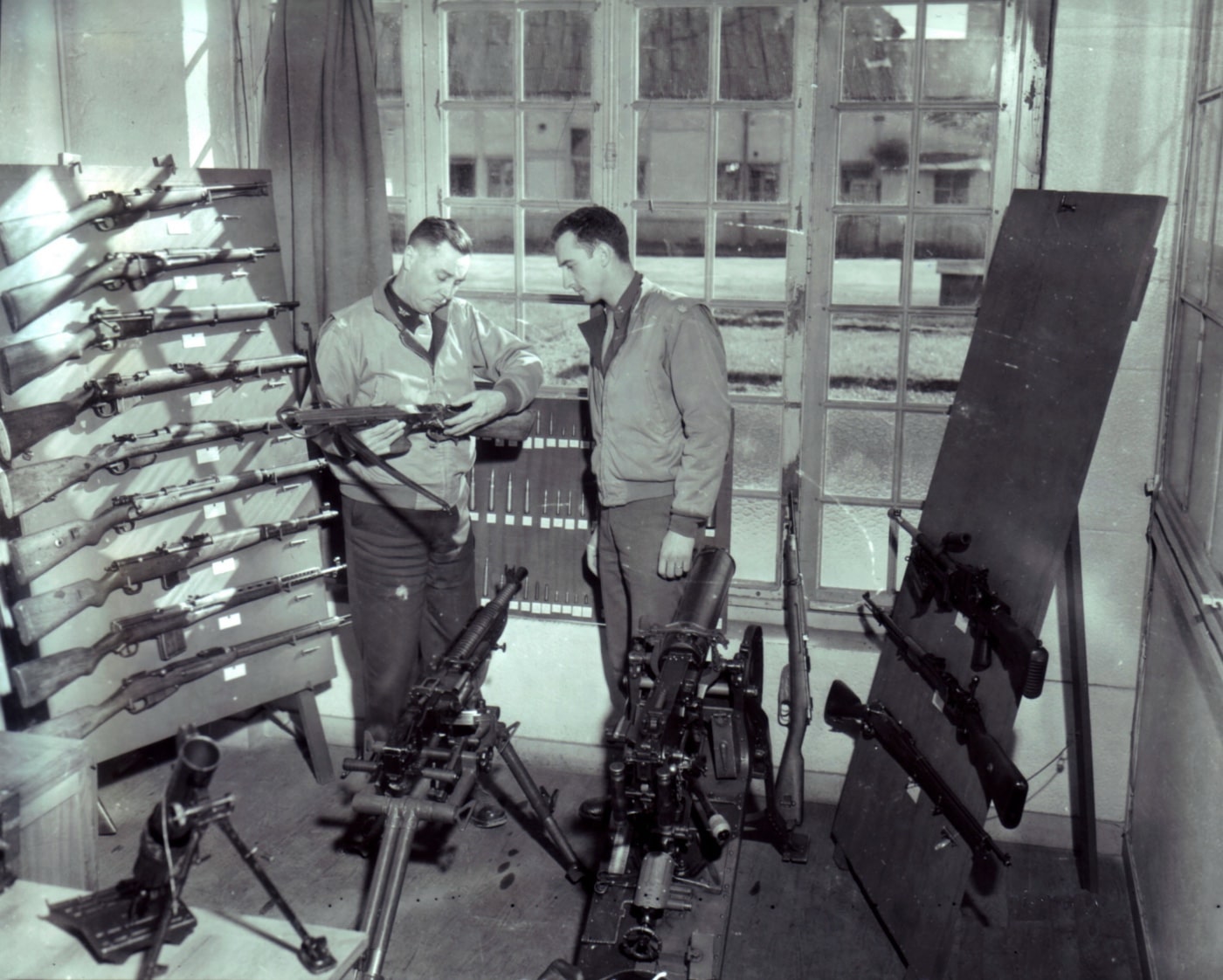
Here’s a look at the key captured small arms used by the Germans during their defense of Normandy.
French Guns
The MAS-36 rifle: The MAS-36 rifle was still new to the French Army in 1940, with many unissued at the time of the German invasion. Chambered in 7.5x54mm French, the MAS-36 was a good rifle and was a welcome addition to the Wehrmacht’s arsenal for garrison troops based in France. In German service, the MAS-36 was called the 7.5mm Gewehr 242(f).
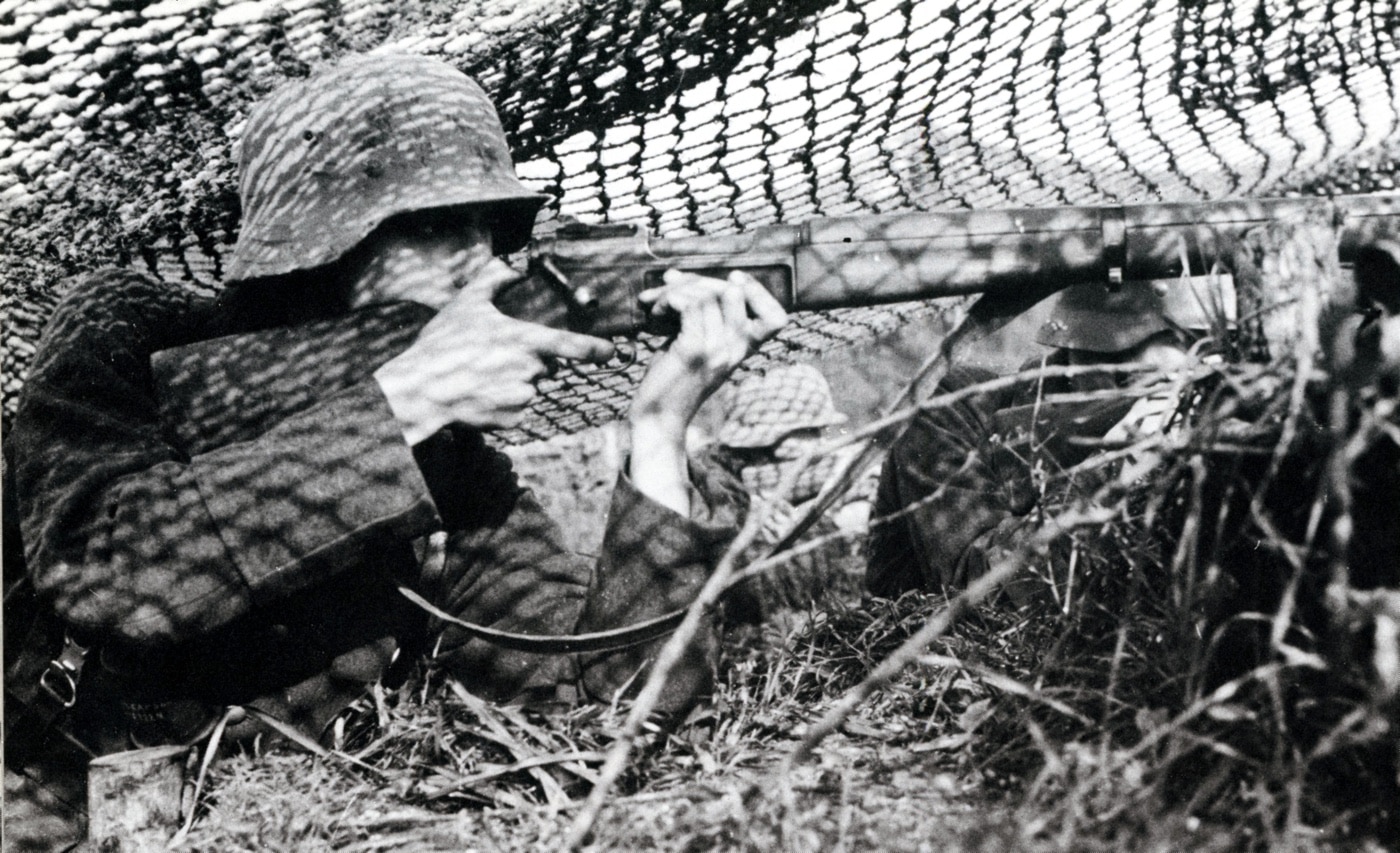
The M1914 Hotchkiss MG: The Hotchkiss Mle 1914 was one of the primary MGs of World War I and was still serving in the French Army during the spring of 1940. The Hotchkiss was heavy (the gun and tripod weighed about 105 pounds), but steady and reliable. The Germans classified it as the 8mm Maschinengewehr 257(f), and many were in use throughout German coastal defense positions in France.
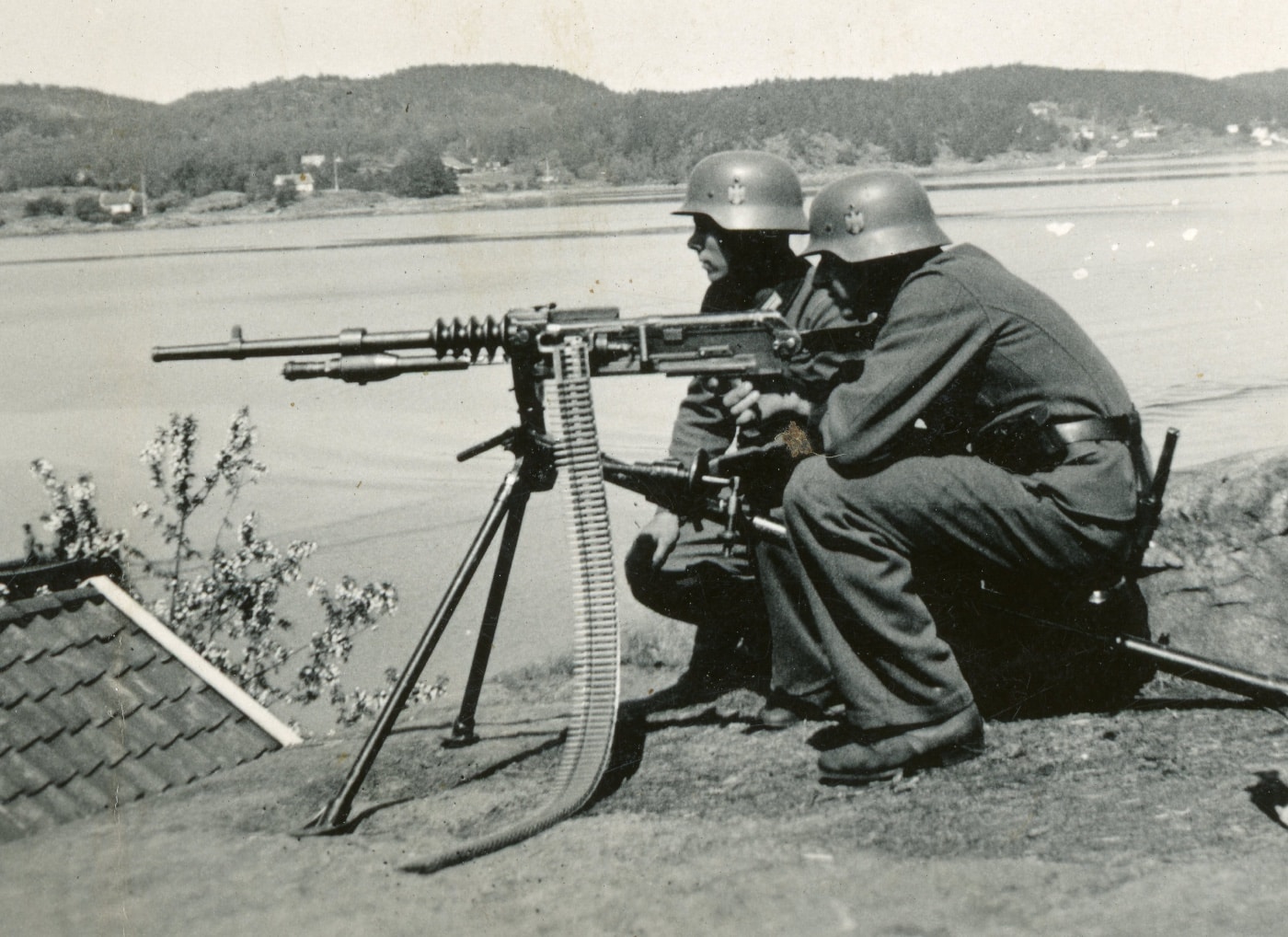
The FM 24/29 Light Machien Gun: France developed the FM 1924/29 just after World War I and found themselves an efficient light machine gun. The LMG 24/29 weighed 20 pounds and was fed by a top-mounted 25-round box magazine. Captured in large numbers in 1940, the Germans issued the LMG 24/29 to many of their coastal defense, garrison, and anti-partisan units in France. In German service, it was known as the 7.5mm Maschinengewehr 116(f).
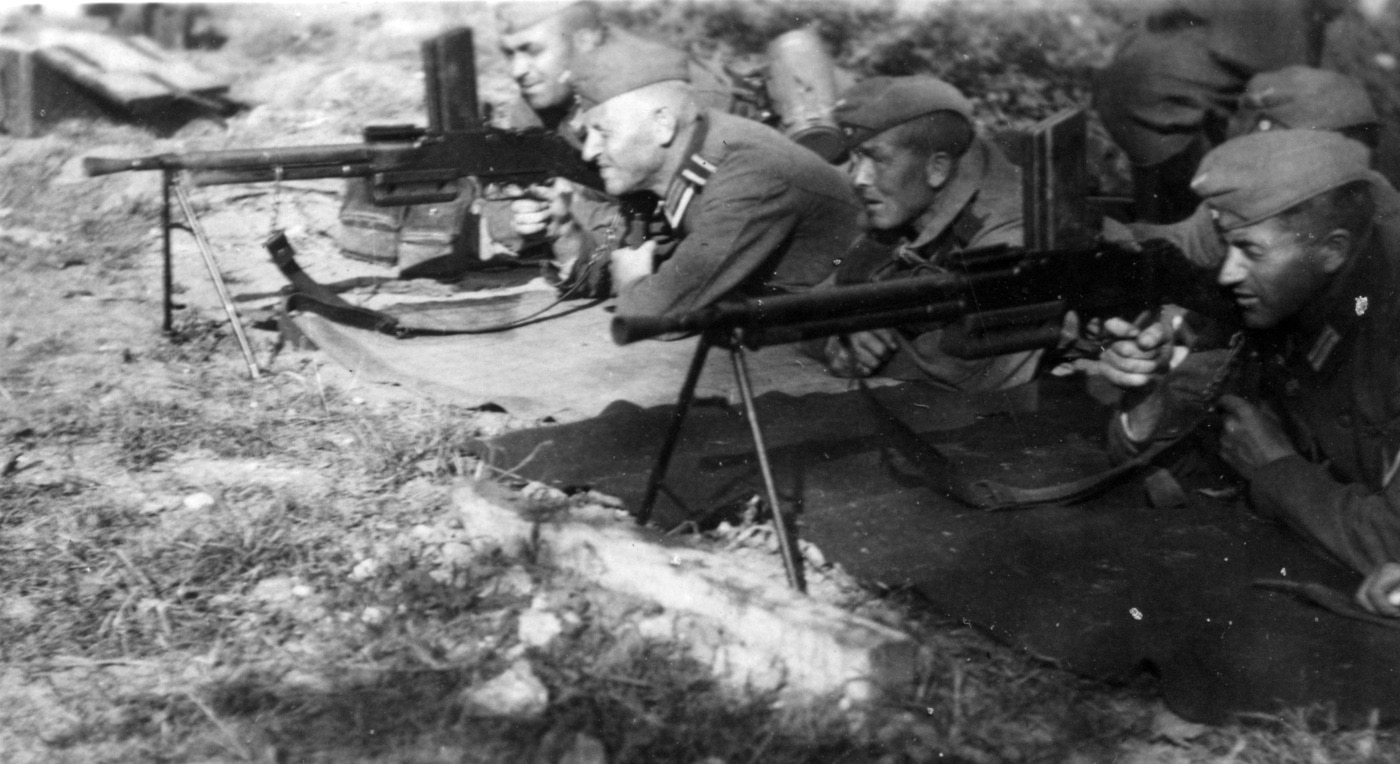
The Reibel MG: The 7.5mm Reibel mle 1931 was the standard French tank machine gun in 1940. A lesser-known weapon, the Germans used the Reibel as an AA machine gun, and equipped some with a simple bipod and shoulder stock for use by garrison troops. The Reibel uses a side-mounted, 150-round drum magazine. The cyclic rate is about 750 rounds per minute. The German designation was 7.5mm Kampwagen-Maschinengewehr 311(f).
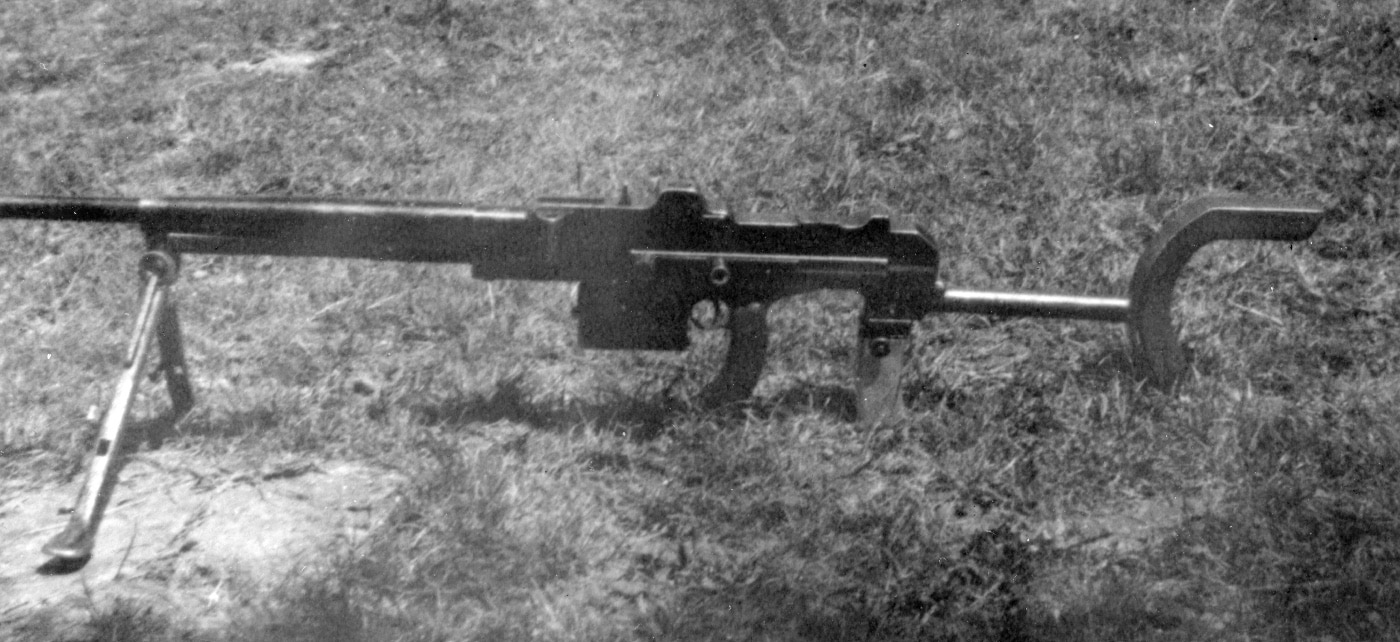
Czech Guns
Kulomet vz. 37: Also known as the ZB-53, this excellent Czech heavy MG design was widely used by German forces throughout the war in various roles — SS field units used them through 1942. Cyclic rate reached up to 800 rpm and the gun was fed by 225-round metal link belts. The Germans adapted a special fortress mount for the weapon, which they dubbed 7.92mm Maschinengewehr MG 37(t).
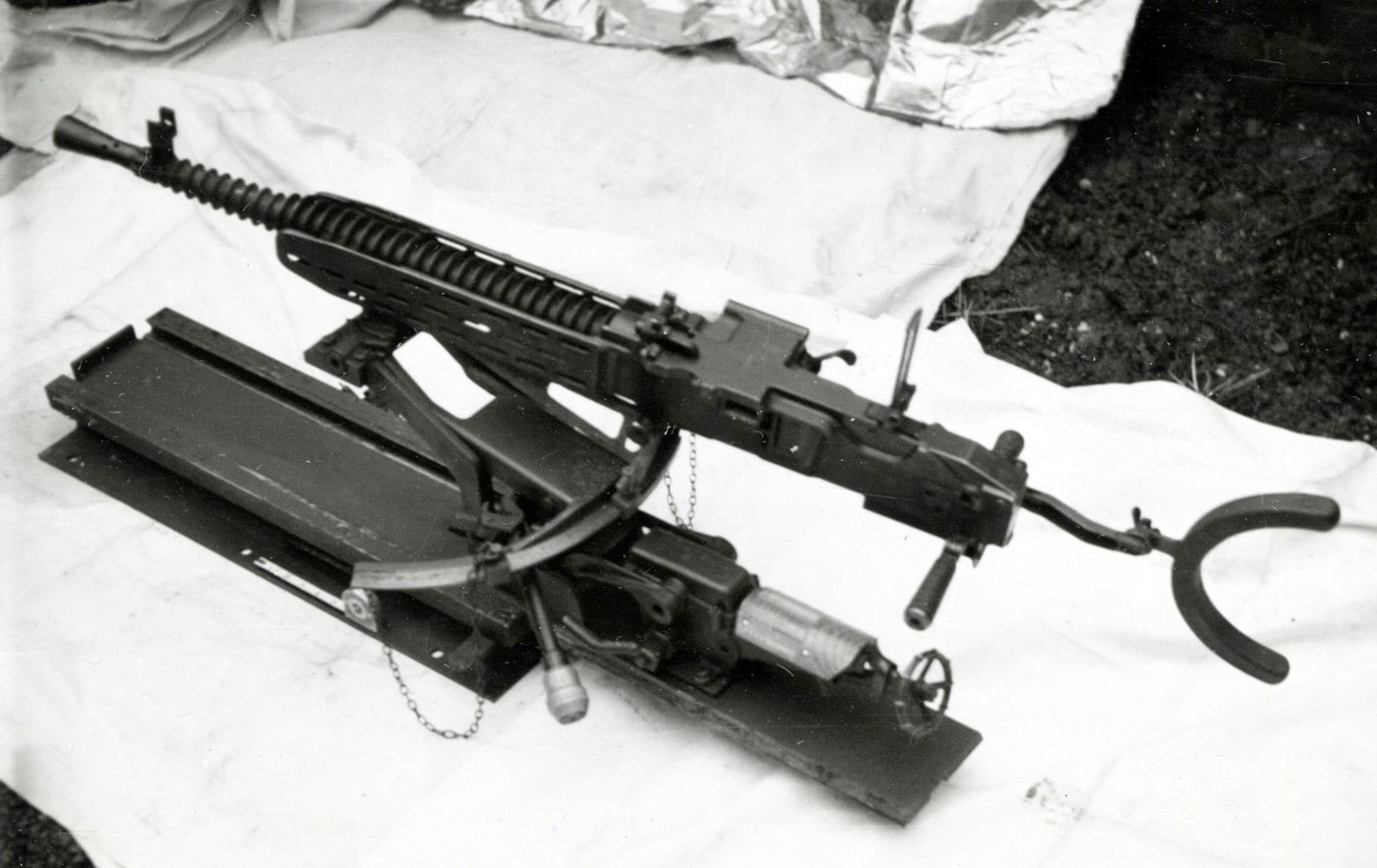
Kulomet vz. 26: One of the outstanding light machine guns of all time (and the predecessor of the British Bren Gun) the vz. 26 was gladly taken into German service after the annexation of Czechoslovakia. Chambered in 7.92x57mm, the vz. 26 was widely used by German troops throughout WWII as the 7.92mm Maschinengewehr 26(t).
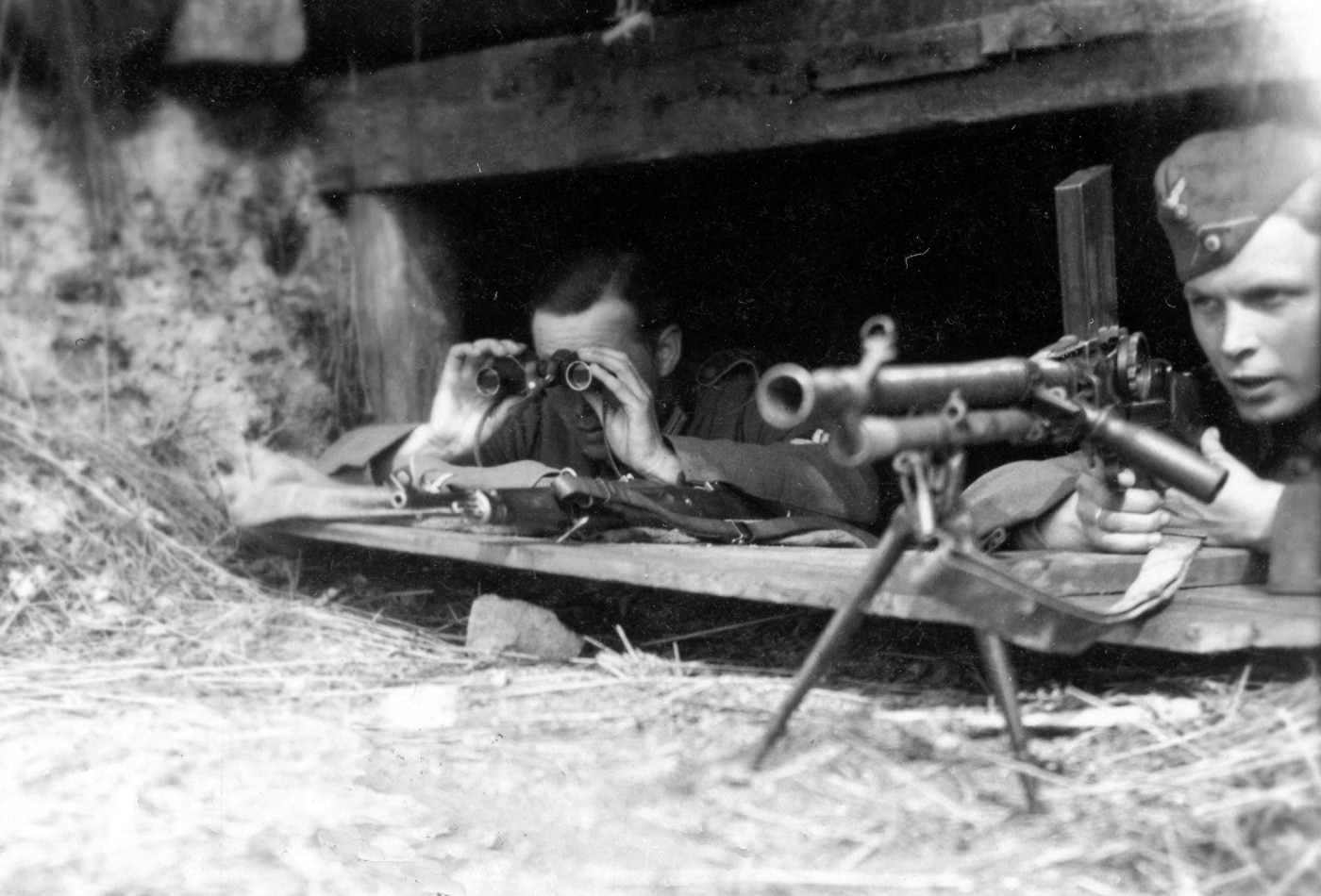
Schwarzlose Machine Gun: The WWI-era Schwarzlose was another of the water-cooled MGs well suited for coastal defense. Many of the Schwarzlose guns acquired from Czech and Austrian stocks were conveniently chambered in 7.92x57mm Mauser. The German designation was 8mm Maschinengewehr 07/12.
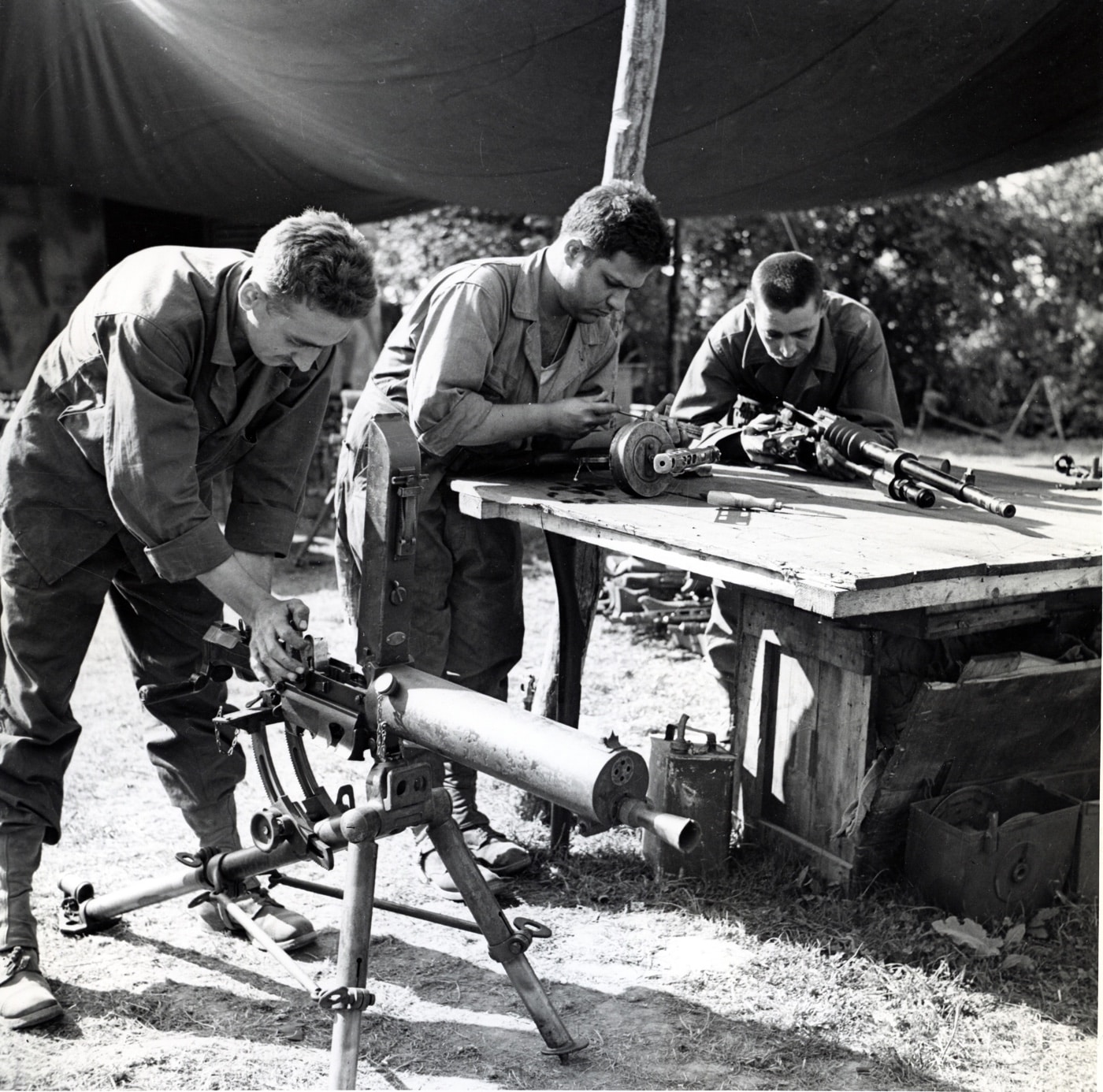
British Guns
The Vickers Gun: The Vickers machine gun served as Britain’s standard heavy machine gun throughout WWI and WWII. German troops put captured Vickers MGs to good use in training, garrison, and in coastal defense duties. In German service, the Vickers was designated the 7.7mm Maschinengewehr 230(e).
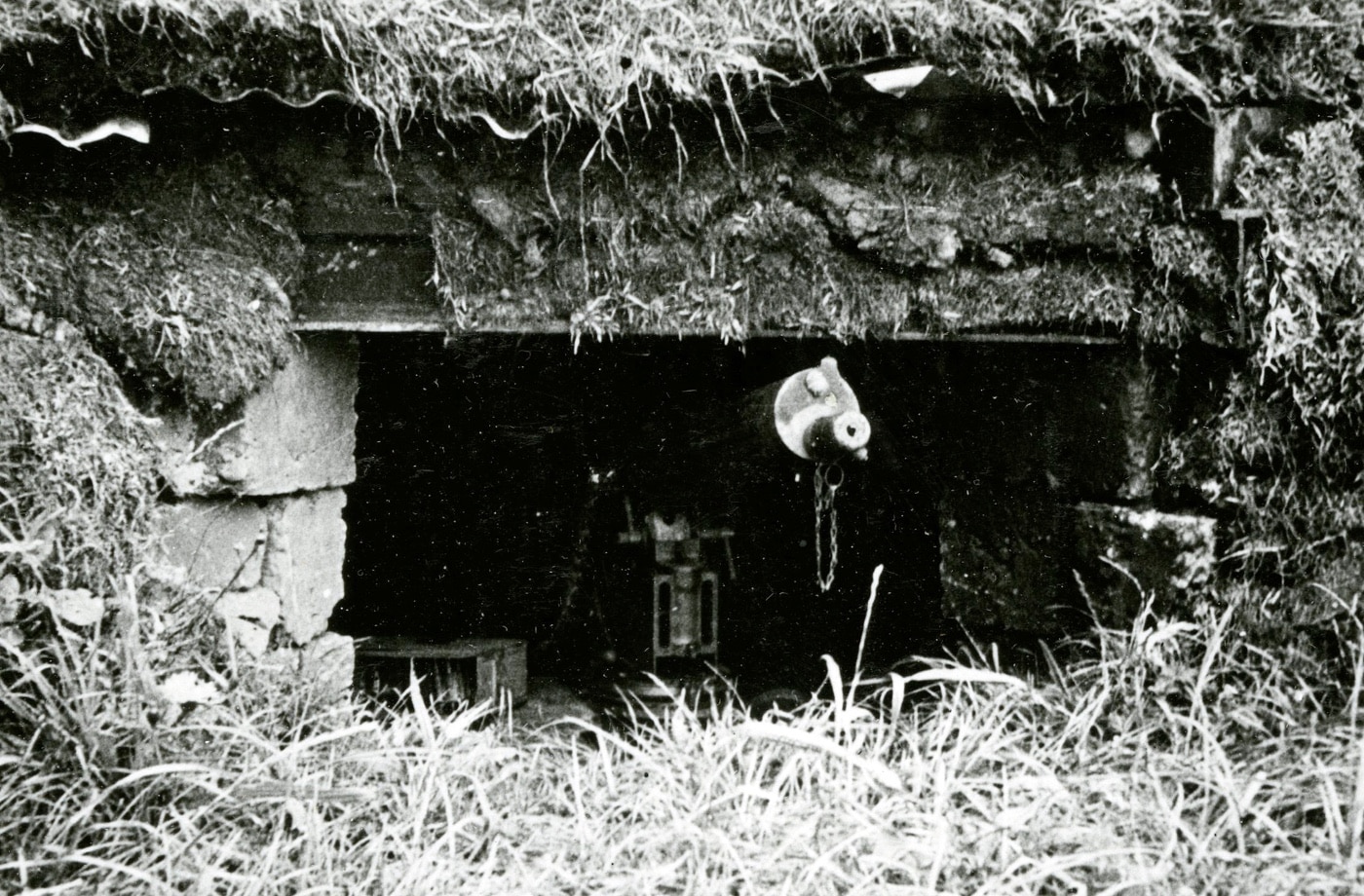
The Bren LMG: The Bren Gun is one of the greatest light machine guns of all time, and the Germans were happy to use them whenever possible. Some were acquired in the weapons left behind at Dunkirk, others were captured in the Balkans, and a few more from those air-dropped into France for the Resistance. The supply of .303 ammunition and spare magazines was a significant hurdle for German logistics. The German designation for the Bren was 7.7mm Maschinengewehr 138(e).
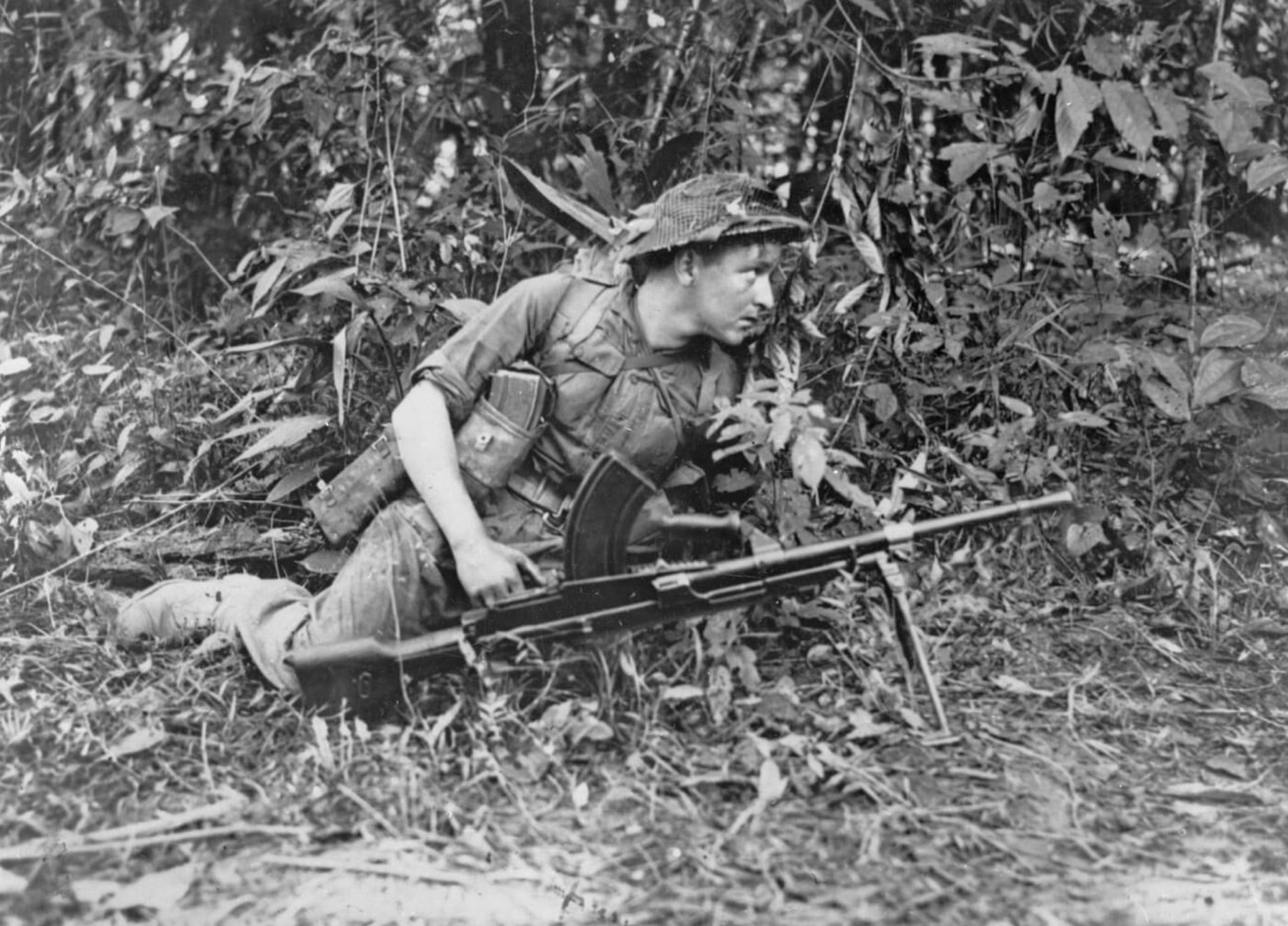
The Lewis Gun: Some Lewis Guns left behind in France after the Dunkirk evacuation were used for training as well as the defense of the Atlantic Wall. Access to .303 ammunition and spare ammunition drums made widespread use unfeasible. The German designation for the Lewis Gun was 7.7mm Maschinengewehr 137(e).
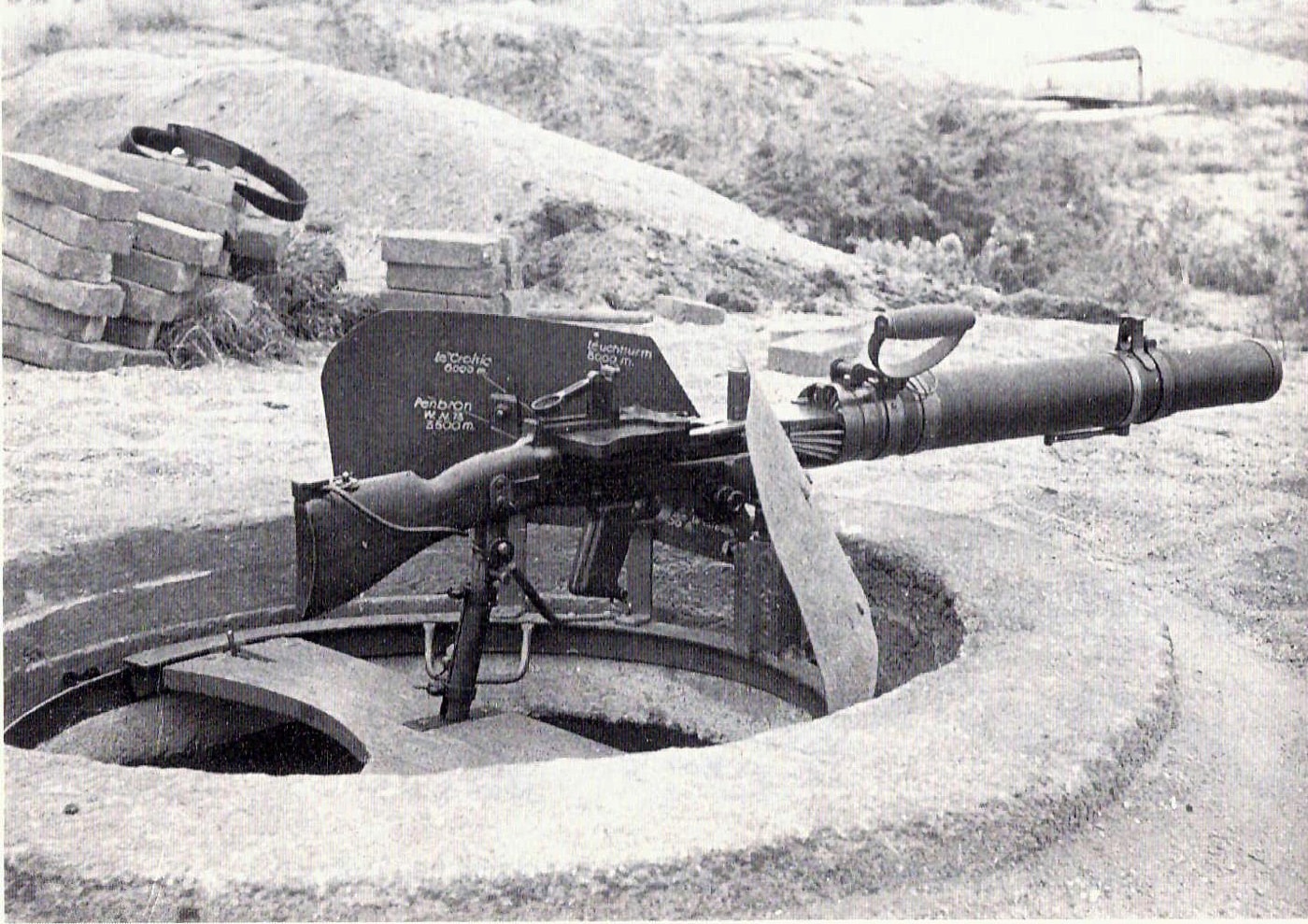
Polish Guns
CKM wz. 30: A Polish copy of the Colt commercial variant of the Browning M1917 machine gun. Chambered in 7.92x57mm Mauser, the wz. 30 was an excellent weapon for use within a bunker. At least one wz. 30 has been confirmed in use on Omaha Beach during the morning of June 6th.
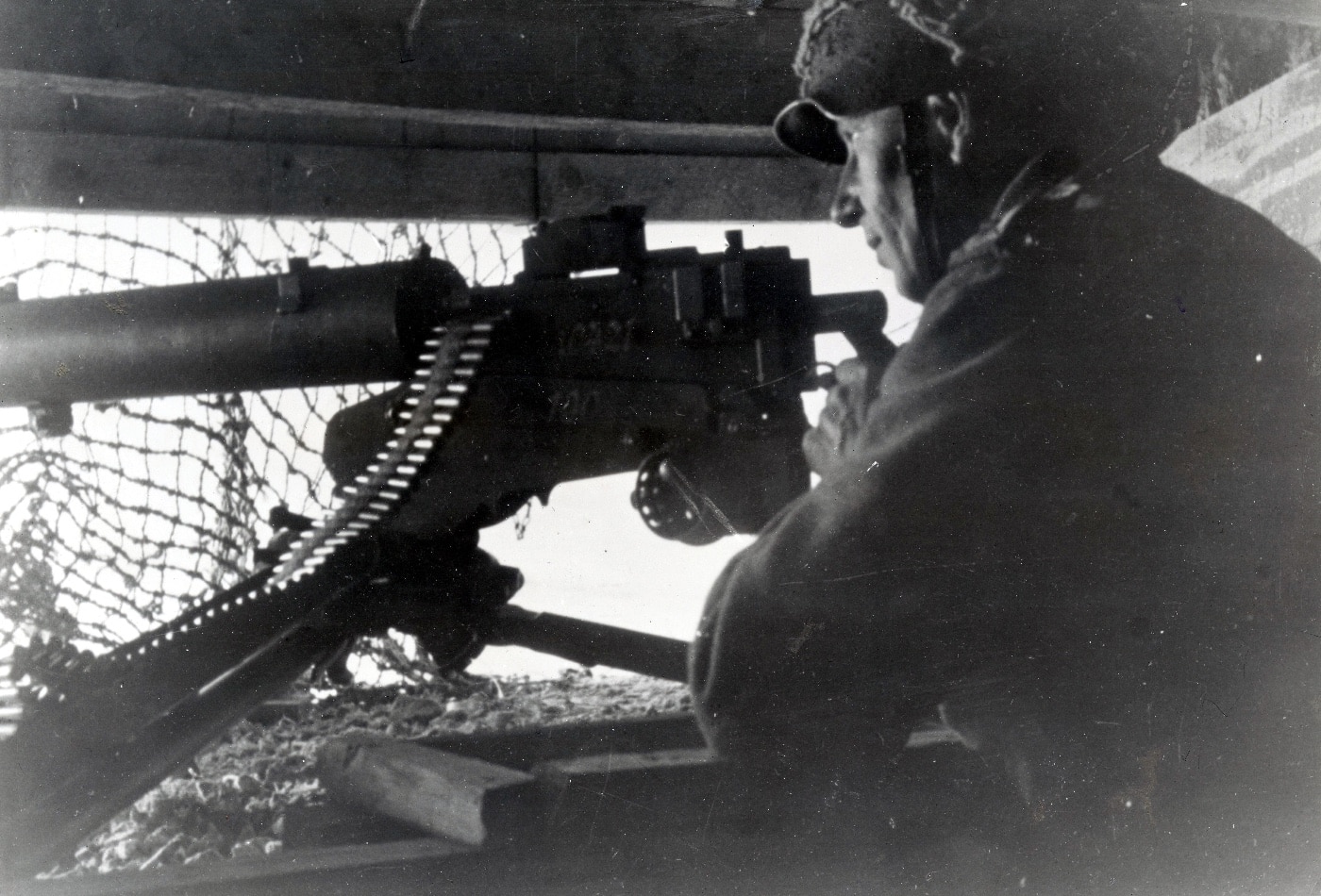
Browning wz.1928: Poland adopted a license-built version of the Browning M1918 BAR during 1930. Chambered in 7.92 x 57mm, these automatic rifles were readily taken on by the Wehrmacht after Poland fell in September 1939. A few of the wz 1928s were found by Allied troops in Normandy. In German service the wz. 1928 was called the 7.9mm Maschinengewehr 154/1(p).
Russian Guns
While Soviet small arms were used in large numbers by German troops on the Russian front, it was quite rare to find Red Army small arms on the Western Front. The lack of Russian ammunition (7.62x54mmR for rifles and machine guns, and 7.62x25mm Tokarev for pistols and SMGs) was a significant hurdle in their use in France.
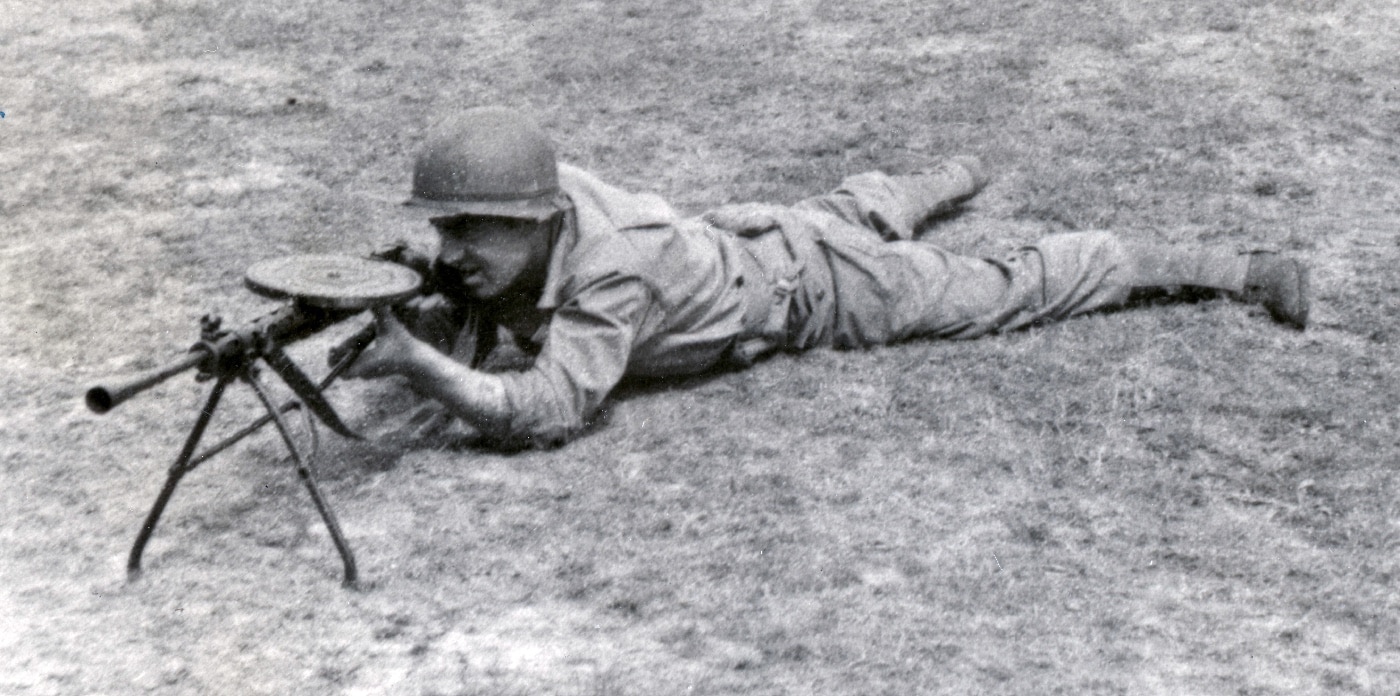
Even so, it seems that some of the “Ostruppen” units brought some of their firearms with them. Photos show U.S. ordnance troops reviewing them in the field, or G.I.s displaying them as trophies. So far, German documentation regarding Russian small arms in France has not been found.
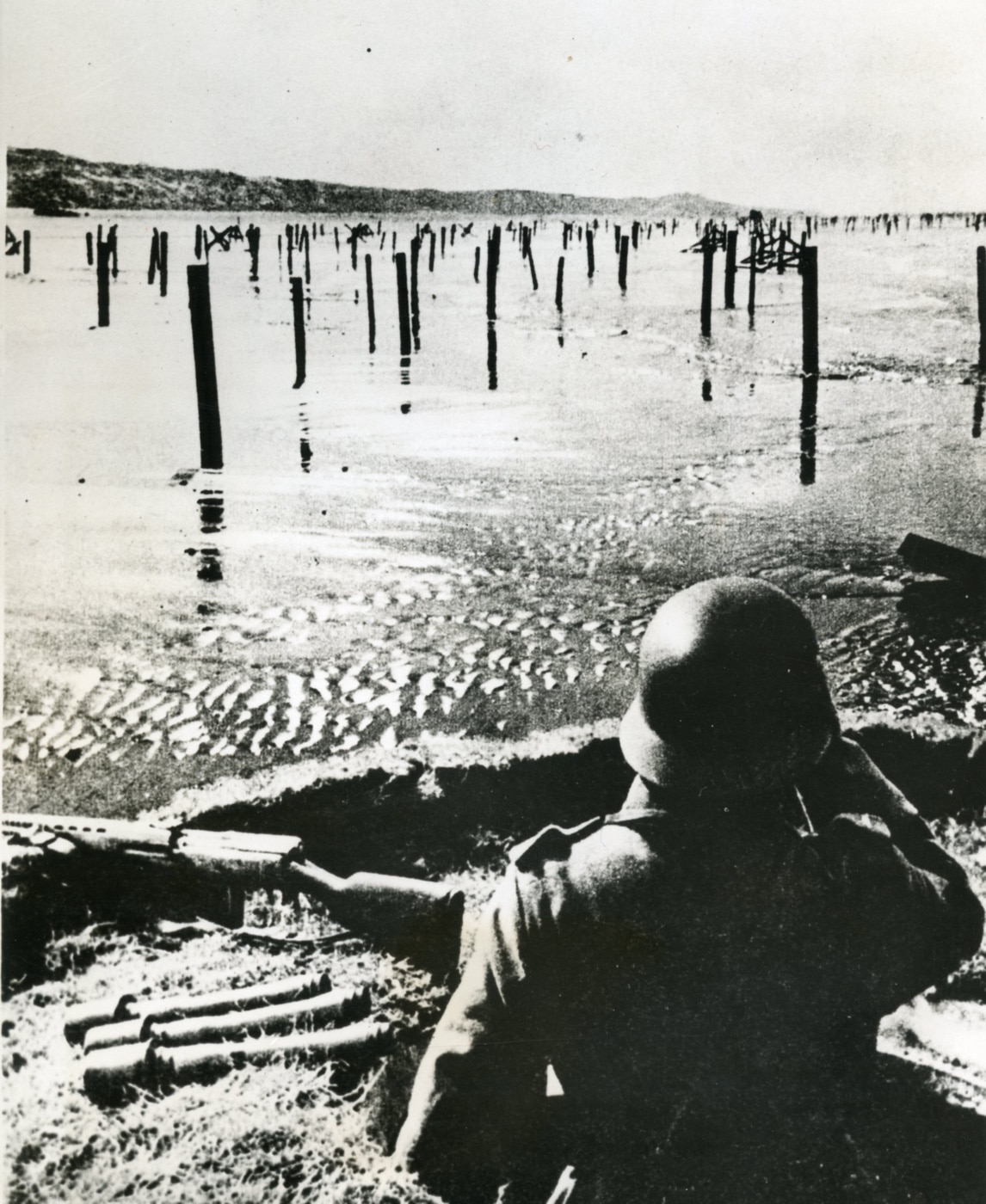
At this point, it is a minor footnote to the Normandy invasion, and a slice of WWII firearms trivia that raises several “what if” questions in the minds of collectors. The following are the Soviet small arms photographed after capture by U.S. troops in France during 1944:
Conclusion
While ultimately there was no practical way the Germans could withstand the Allies’ assaults on both fronts, these efforts in the Western Front showed how desperate the Germans were at this point. Additionally, the use of these foreign weapons makes for a fascinating historical footnote for one of the most important points in the history of World War II — the breaching of the “Atlantic Wall” by the Allies, leading to the eventual downfall of the third Reich.
Editor’s Note: Please be sure to check out The Armory Life Forum, where you can comment about our daily articles, as well as just talk guns and gear. Click the “Go To Forum Thread” link below to jump in and discuss this article and much more!
Join the Discussion
Read the full article here


